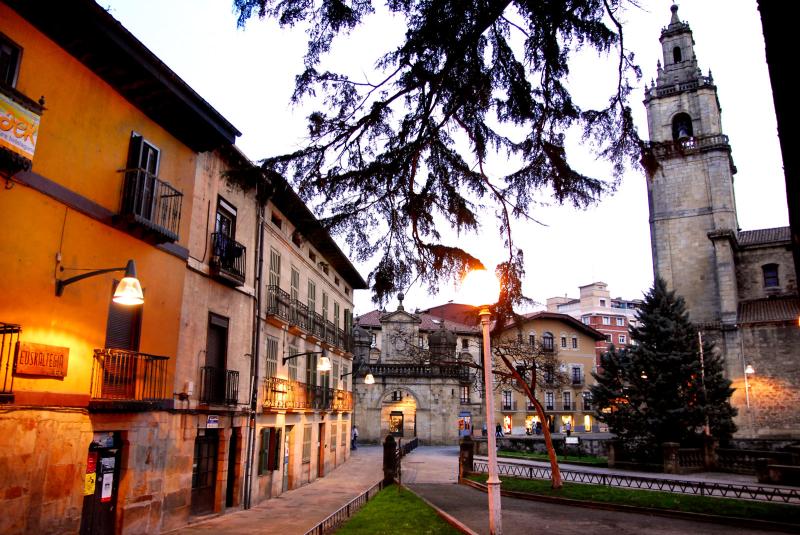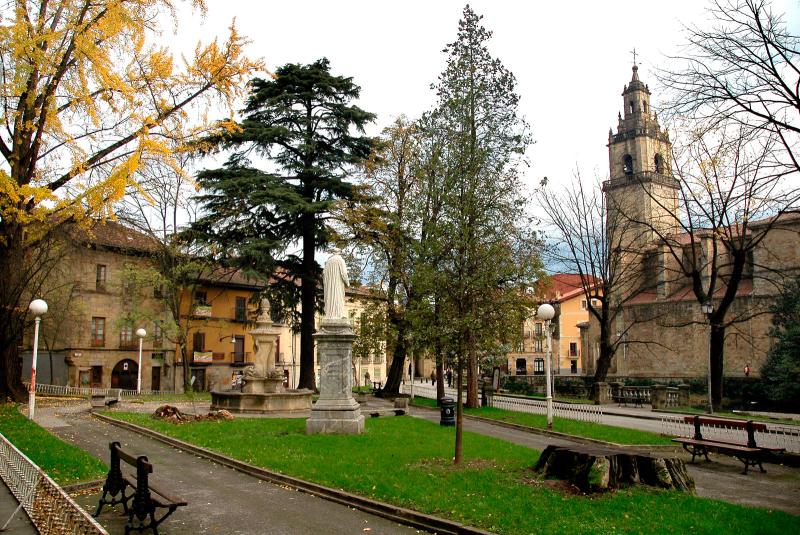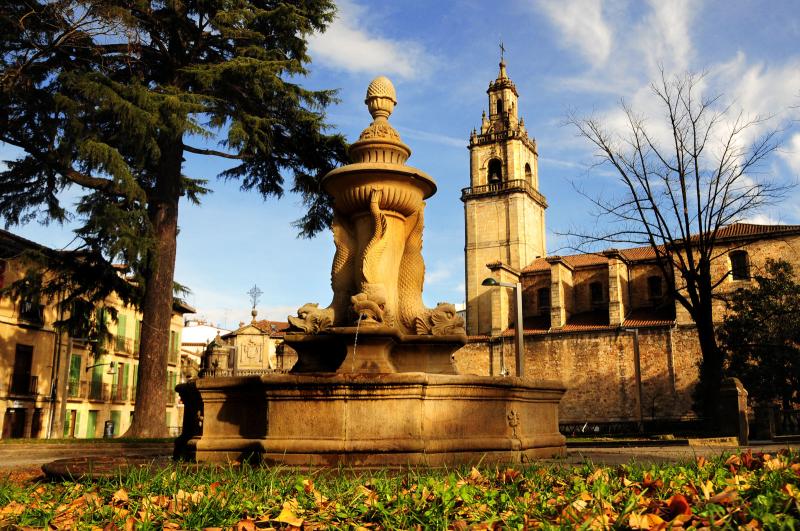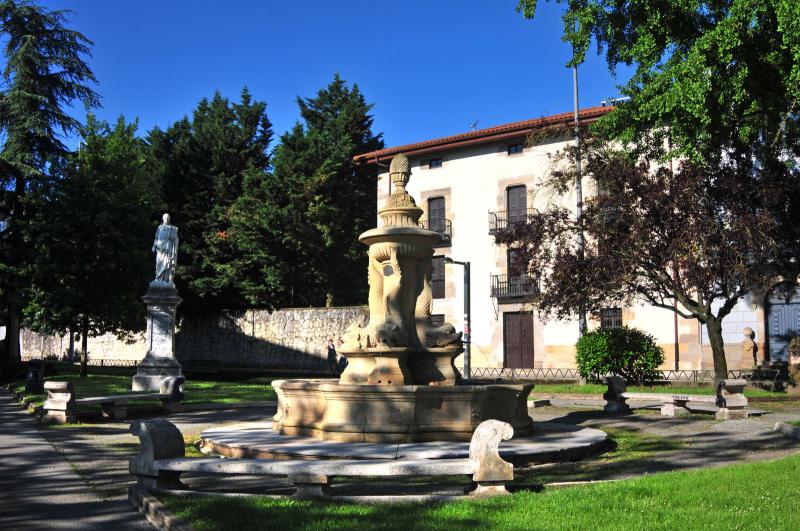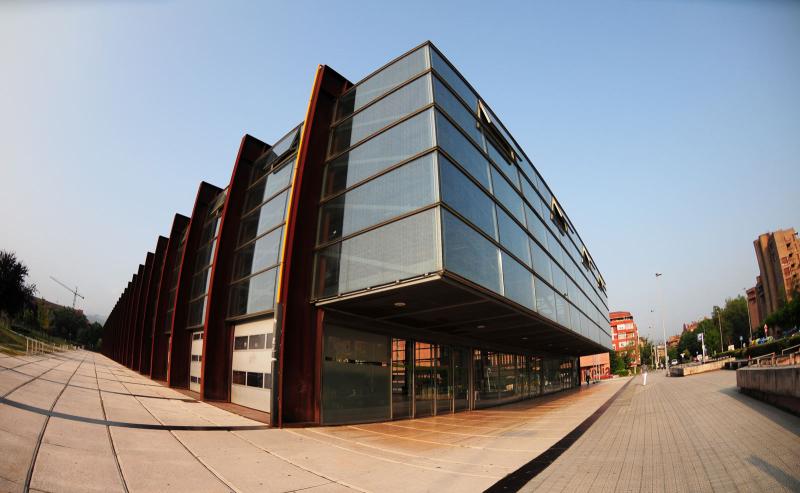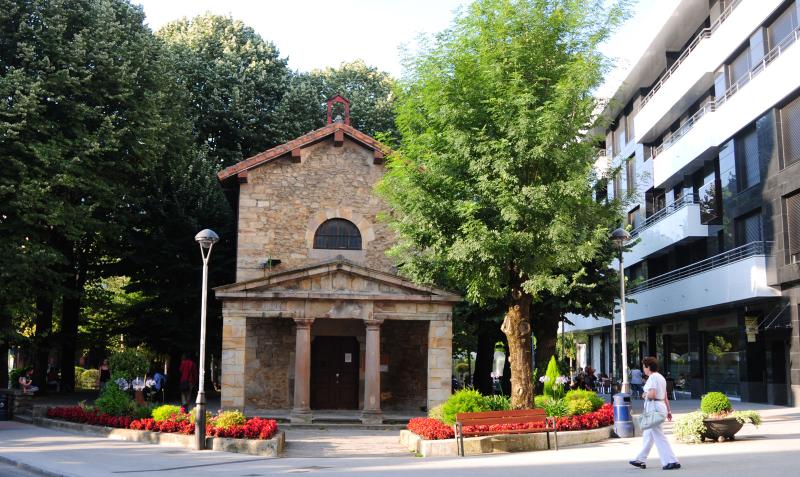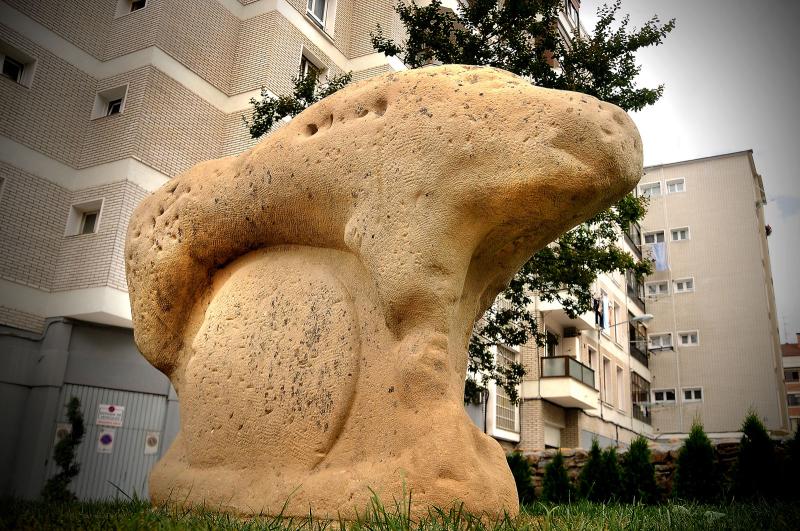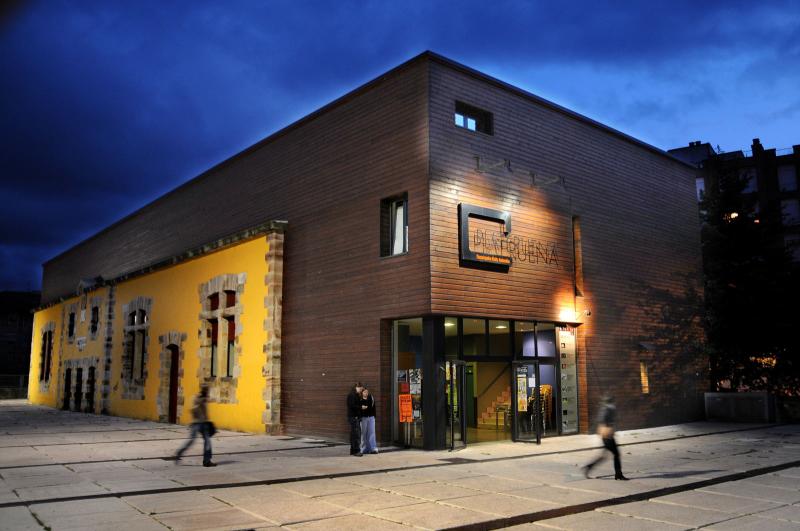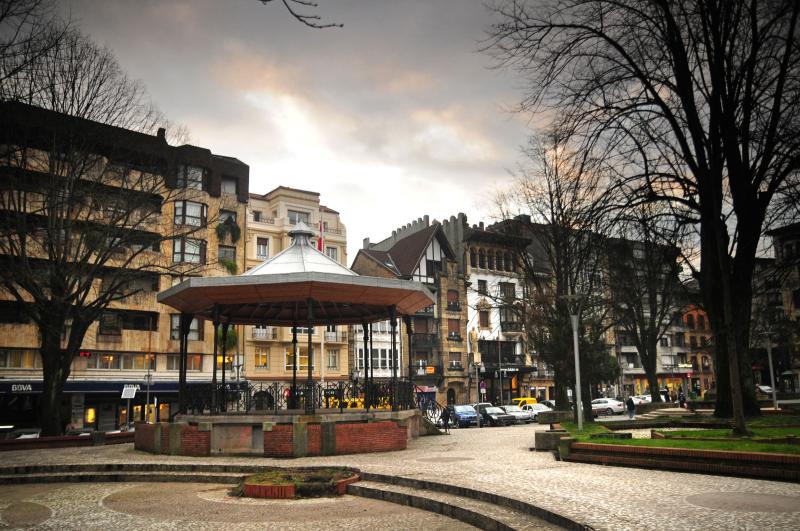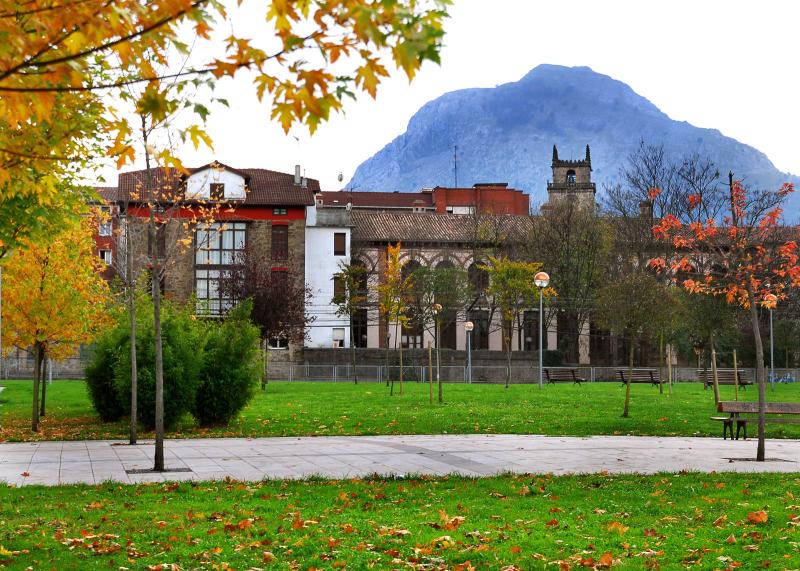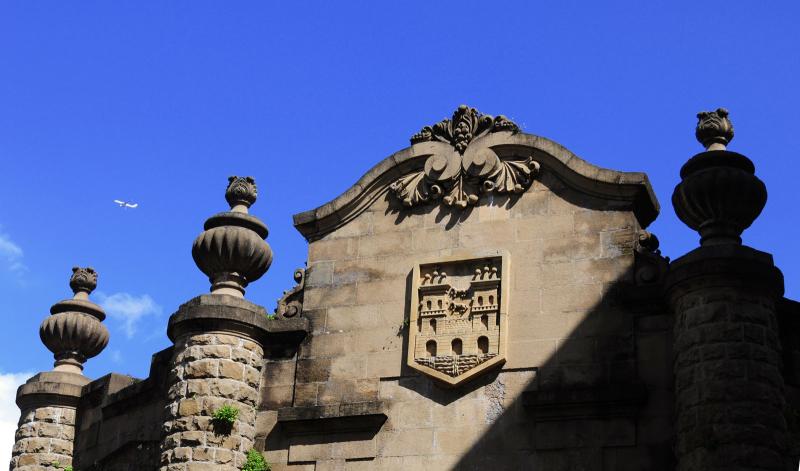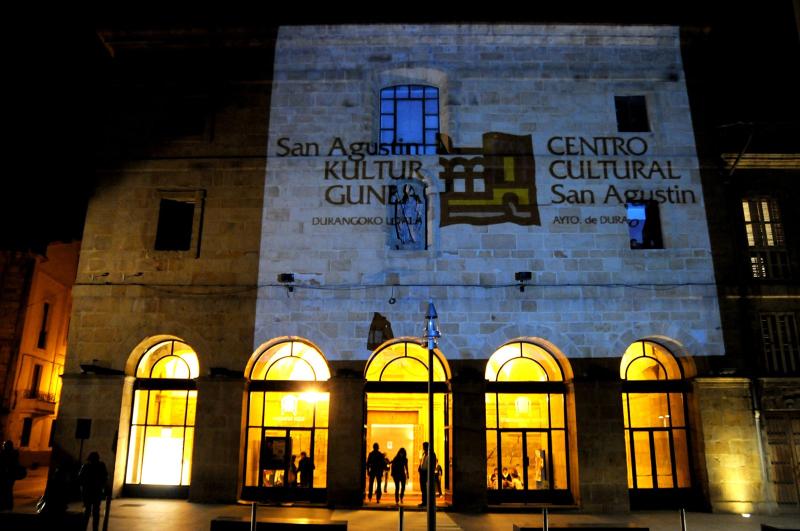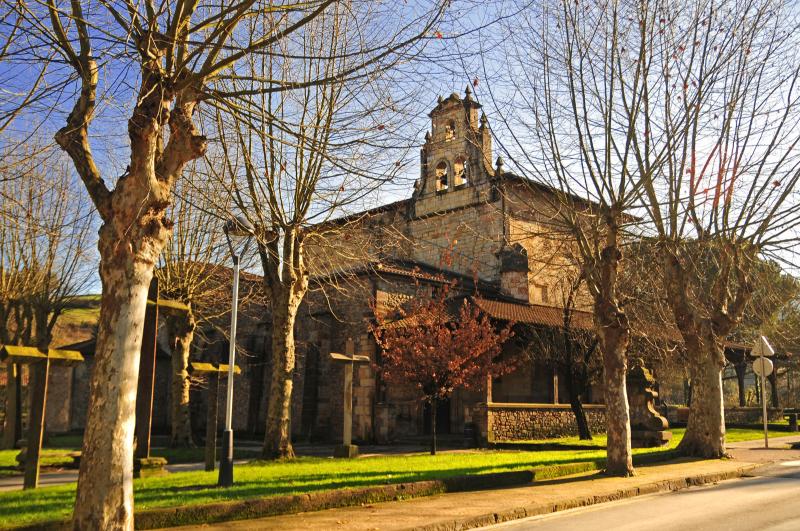Pablo Pedro Astarloa
Pablo Pedro Astarloa was an important Basque linguist who was born in Durango in 1752.
The statue is the work of Bernabé Garamendi and Serafín de Basterra and was inaugurated in the presence of the musician Valentín de Zubiaurre in July of 1886, in Plaza Ezkurdi, the original location of the statue, during the celebration of the First Basque Festival of Hegoaldea. [Hegoalde = Basque Country on the Spanish side, Iparralde being the corresponding part on the French side].
It stands on a column of black marble from Mañaria and is the first statue in Bizkaia in honour of a personage.
Astarloa Mansion House
The Astarloa Mansion House, from the XVIII century and baroque in style, was for many years the home of the philologist Pablo Pedro Astarloa.
It has a wide entrance with a semi-circular arch and a coat-of-arms from 1773.
Pinondo House
Adjacent to the bridge we have the Pinondo House, 1885, which was never a residence.
It represents without doubt the best-finished and most outstanding vestige of civil architecture of neo-classic style existing in Durango. Its distribution of windows and doorways is very tastefully balanced.
Errekondo House
On the banks of the river we see the house of Errekondo, known as Santanoste, which is one of the oldest buildings in Durango, but which has been extensively reformed. On the façade we can see several gothic-renaissance windows.
The Cross of Pinondo
Romanist, it is the Final Cross and dates from the late XVI century. On the column we find images of Christ on the Cross and the Pieta.
Monumental Fountain of Pinondo
In the gardens we see the fountain of Juan Antonio de Eguren, of Italian-baroque influence. The principal features are the four fishes, and from their mouths streams the water. These are the work of the sculptor Juan Bautista Bengoetxea.
It carries the following inscription. "Water laid on in the year 1864 – 8th Dec. 1926" Juan Antonio de Eguren, in 1864.
Ginko Biloba
The remaining trunk of a sequoia (redwood) some 160 years old which was felled in 1992. It is a reminder of the pine tree that gave this park its name.
Today we have another tree, close to the bridge, which appears to want to take its place, a specimen of Ginko Biloba, a native of China, also called maidenhair tree.
Cedro Atlántica Glauca
On the other side of the roadway we have a giant cedar, Cedro Atlántica Glauca, which has been the nesting-place of a pair of storks for the last decade.
Orue House
Classicist and from the XVII century, was court and headquarters of the pretender Don Carlos in the first Carlist War, and a prominent location during the second.
It was modified at the beginning of the XX century.
Etxe Zuria House
An eclectic design, it was built by the Ampuero family at the end of the nineteenth century on the site of an old palace that went back to the XVI century.
Impressive for the great variety of ornamental motifs of different tastes and origins; neo-platonic, neo-renaissance, neo-baroque, neo-byzantine, etc. On the façade there is a coat-of-arms from the XVIII century, which was retrieved.
"La casa del ahorcado" - the house of the hanged man
From Pinondo, on the crest of the hill, we can see the house known commonly as "the house of the hanged man".
Grand Hotel Durango
Between Pinondo and Tabira, on the road towards Urkiola, we find the Grand Hotel, a Mansion House from 1919 by the architect Ignacio Maria Smith. It is of regionalist style, with English cottage influences.
"Mojón de Leguas"
Opposite the hotel, in the centre of the roundabout on Laubideta street, we find what you might call a milestone, but giving the distances in leagues to Otxandio and to Bilbao.
Laubideta means "four roads" and owes its name to the crossroads where the traveller could take one of four different directions. On the milestone is inscribed: "Road opened in 1784".

